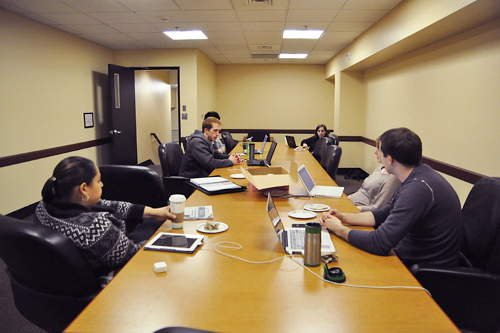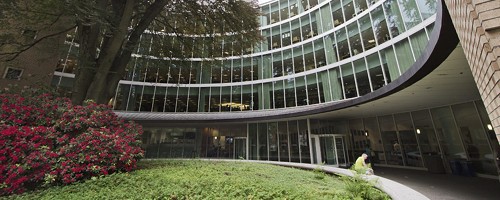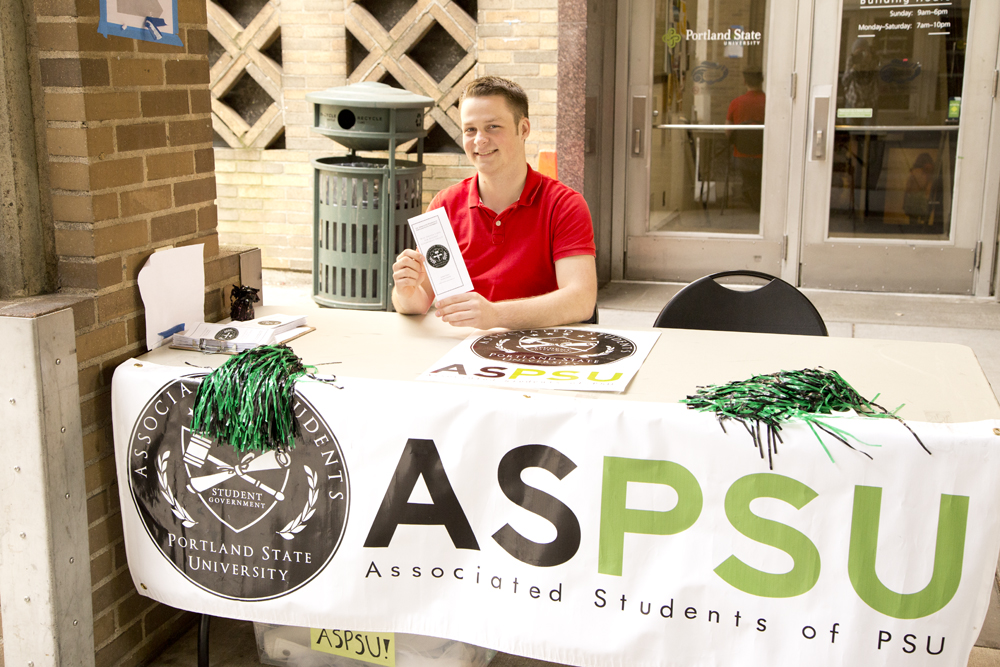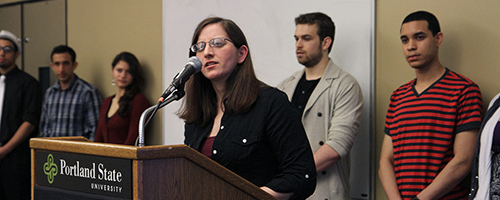As the year comes to a close, the student fee committee is wrapping up activities, documenting final balances for fee-funded areas and finalizing documentation for the transition to a new SFC coming in with the new Associated Students of Portland State University administration. These are tasks ASPSU Vice President and SFC Chair-elect Nick Rowe called “very important to the current and continued smooth functioning of the SFC.”
Student Fee Committee wraps up end of year projects, passes 2012-13 budget

As the year comes to a close, the student fee committee is wrapping up activities, documenting final balances for fee-funded areas and finalizing documentation for the transition to a new SFC coming in with the new Associated Students of Portland State University administration. These are tasks ASPSU Vice President and SFC Chair-elect Nick Rowe called “very important to the current and continued smooth functioning of the SFC.”
The year winds down after coming off a busy period of various projects and the passage of the 2012–13 budget for student fee allocations. After the ASPSU senate passed the budget proposal at the end of last term, it was presented to President Adam Rahmlow, who, after discussions with SFC Chair Mart Stewart-Smith and questions to the general committee, approved the budget.
The 2012–13 budget aimed at trimming some of PSU’s larger programs, with the intent to make programs more responsible and sustainable. The budget includes cuts or restructuring to some of PSU’s student programs such as the athletics program, the multicultural center and student publications.
Another important aspect of the new budget model was the change in student position pay evaluation in order to better organize the pay structure of wages in student programs. As stated in the committee’s presentation to Rahmlow, “over the years, the SFC has noticed an increasing disparity in student wages across fee-funded programs.”
The SFC used the same model used by PSU Human Resources as the guideline. The model used by HR employs a tier system in which each position is evaluated and placed in one of six levels increasing in wage and responsibility. The SFC budget presentation argued that this model would help “to classify each student position by student employee level and fund those positions at the base rate for that level.”
Stewart-Smith discussed the evaluation process the SFC undertakes in the assessment of programs for allocation in the budget proposal for each fiscal year i.e. student wages as well as possible cuts in allocation, as in the case of athletics, which will see a 3 percent change in funding for next year.
“We do our best to assess the value of each program in a vacuum as they exist and as they operate with their given mission independently from others. And we assess how much money is necessary in order to make that mission possible and in order to make it worth funding at all.
So to that regard, with looking at funding areas individually, we try and make sure we don’t give them more money than they need or more money than is appropriate for what they claim they want to do and what they’ve proved that they are capable of doing. If it happens that we reduce the amount of funding for a particular program then we do have more money that we can use for other programs, but that doesn’t happen very often; this year was an exception,” Stewart-Smith said.
Stewart-Smith explained that it is difficult to cut funding from programs, in part because it’s difficult to find an alternate source to replace the funds initially provided by student fee allocations. This is not always an issue: Sometimes cuts can be made without being replaced. However, in the case of a program like the Learning Center, Stewart-Smith explained that SFC did not want to make functional cuts but argued that the funding should be the responsibility of PSU instead of coming from student fees.
“The incidental fees should not go toward fundamentally academic activities. They should go toward cultural development, they should go toward athletics, they should go toward recreation, they should go toward student organizations and student development, not toward things having to do with classes, because that is the fundamental mission of the university, to educate in a traditional academic setting, and we feel that the Learning Center fits that model and criteria,” Stewart-Smith explained.
“We didn’t think a preponderance of money should come from student fees. We wanted to make sure that they still had the money that they needed to function and provide the service that students think is valuable. So when we made the cut we had hoped to establish an understanding with the administration that they would pick up the slack, that they would make up the difference with education and general funds, and that didn’t happen,” Stewart-Smith added.
Due to fruitless negotiations with PSU administration, the Learning Center will continue to be funded by student fee allocations overseen by the SFC, as general funds from PSU have not been made available. Stewart-Smith suggested that the issue of funding for the Learning Center would be something that the SFC would continue to address in the future.
At of time of publication, SFC members did not respond to requests regarding student fee allocations, including information on specific cuts or budget allocation changes to the multicultural center or student publications.
Correction: June 1, 2012
An earlier version of this article contained a headline that incorrectly stated that the ASPSU president approved the 2012-2013 student fee committee budget. The ASPSU president does not have the authority to approve any budgets proposed by the SFC.







Unfortunately, there is a large factual error repeated throughout this otherwise well-researched piece. The ASPSU president doesn’t have any role in approving the overall budget. After it is finalized by the SFC and the ASPSU Student Senate, it is sent to the University President, Wim Wiewel. Everywhere that this article references a president, or Adam Rahmlow, it should be referring to President Wiewel.